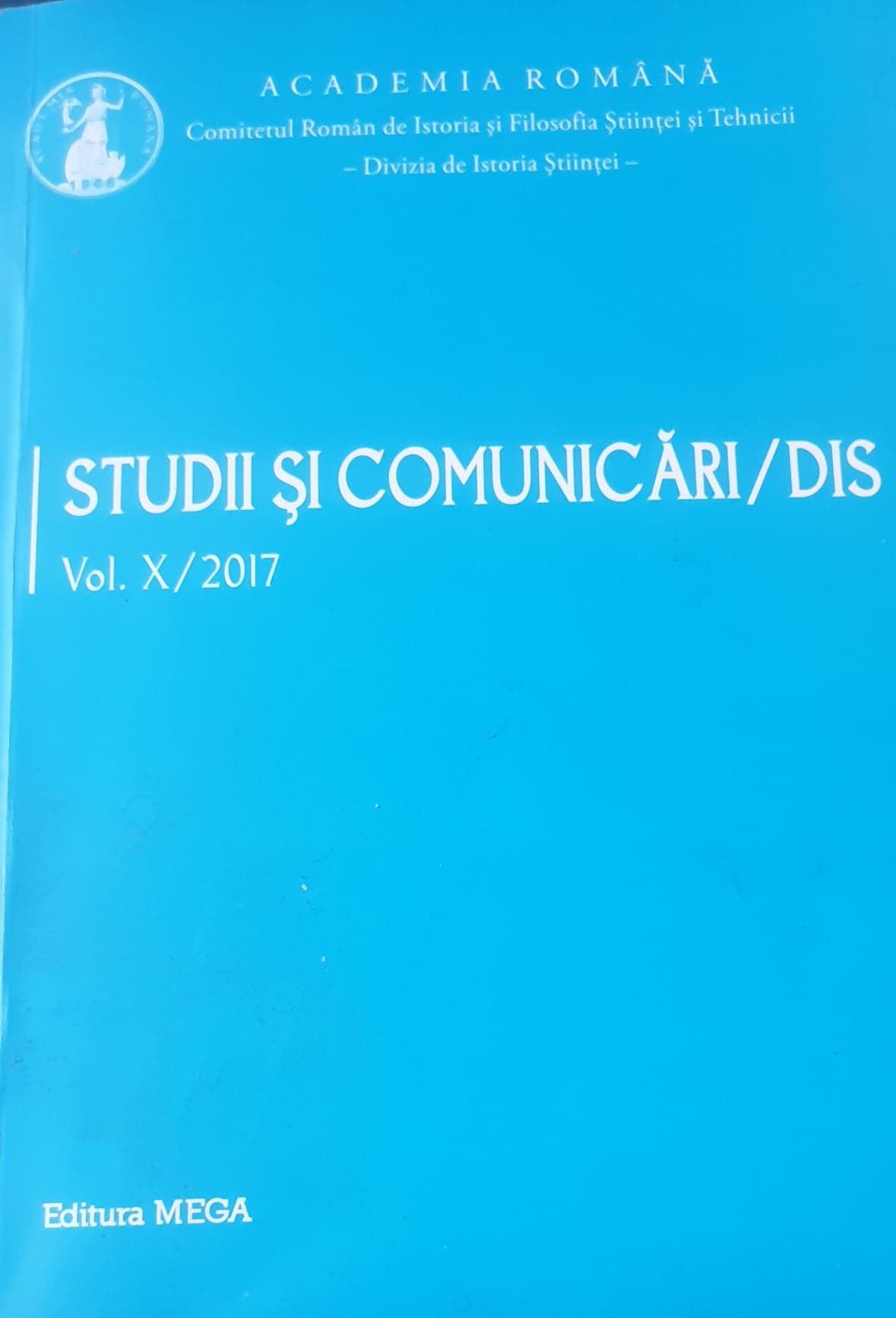Grigore Antipa şi Ion Ciurea, personalităţi marcante ale ihtiologiei şi ihtiopatologiei româneşti şi mondiale
Grigore Antipa and Ion Ciurea, Outstanding Personalities of Romanian and World Ichthyology and Ichthyopathology
Author(s): Dumitru Curcă Subject(s): Scientific Life
Published by: Editura Mega Print SRL
Keywords: Ichthyology; ichthyopathology; personalities; Grigore Antipa; Ion Ciurea;
Summary/Abstract: The biologist Grigore Antipa (1867–1944), through his hard work, becomes one of the greatest Romanian biologists, working in two main directions: Museography and HydrobiologyEcology. Most of his work is devoted to hydrobiological research and fish economy. For the knowledge and in order to increase the fish production in Romania, Antipa makes important contribu tions with a series of works concerning fish fauna in Romania, and fishing as well, concerned especially with the floodplains and the Danube Delta. With his knowledge in hydrology, fish farming and Danube issues Antipa is appointed member of the State Fishing Administration (1895), general inspector of State Fishing (1897), expert adviser of the Danube European Commission, member of the International Commission for the Scientific Exploitation of the Mediterranean Sea, member of the Paris Oceanographic Institute’s Training Committee, etc. In 1909, in his dissertation: „The ichthyological fauna” he reports some abnormalities of the head in carp, perch gray mullet and bream or color abnormalities in roach and sterlet and more species of parasites (helminths and crustaceans) in some fish. And in 1916 he published the work „Fisheries and fishing in Romania”, where he describes the fishing tools, water quality management in fish ponds, the life of the Delta fishermen, etc., and also prefigured the developing sportive activity of fishing. He conducted hydro logical, ecological, fish economy and fish farming research, etc., in the Danube Delta, along with other professionals in the field, among which veterinary parasitologist Ion Ciurea. Academician (m.c.) Professor Ion Ciurea (1878–1944), the most representative Romanian parasitologist since 1909, has studied the source of parasites of mammals and birds and has identi fied, while identifying new species (most of them remained in science), a large number of parasites of river and marine fish which, in most cases, represent the larval stage of mammalian or bird parasites. To prove this, since 1913, he resumes the experi ments of the Swiss E. Azkenazy and feeds dogs and cats or wild birds with raw fish, thus identifying the adult stage of the para sites in order to know the larval stage. From these experiments, it appears that parasites as larvae are encysted in the body of the fish (muscles, under skin fins gills, scales, eyes). Fish can become infested with some parasites from mammals or birds from around waters. These justify us to consider Prof. Ion Ciurea as the first Romanian ihtiopathologist. He practiced veterinary medicine in the localities: Craiova, 1902–1903, in Piatra Neamt, 1905–1919, and then he taught the courses of Parasitology and Food Inspection between 1919–1943 at the Faculty of Veterinary Medicine in Bucharest, where, at that time, he founded one of the most endowed and beautiful museums of ihtiopathol ogy in Romania. For this, for almost 3 decades he collaborated with the scientist Grigore Antipa, the founder of the National Museum of Natural Sciences in Bucharest, with whom he organ ized the study of the Danube Delta in various aspects, especially with regard to the fish fund. As a member of the Council of Administration of State Fishing (1929–1931), Ion Ciurea leaned on the study of trematode infestation by consuming fish from the lakes of Danube Delta and the Danube Delta or from the Black Sea lagoons. He has shown that freshwater and marine water fish are an important source of infestation with various trematodes not only for ihtiophage birds, but also for domestic animals and humans (through scientific papers published between 1924 and 1934).
Journal: STUDII ȘI COMUNICĂRI/DIS
- Issue Year: 10/2017
- Issue No: 10
- Page Range: 33-59
- Page Count: 27
- Language: Romanian

